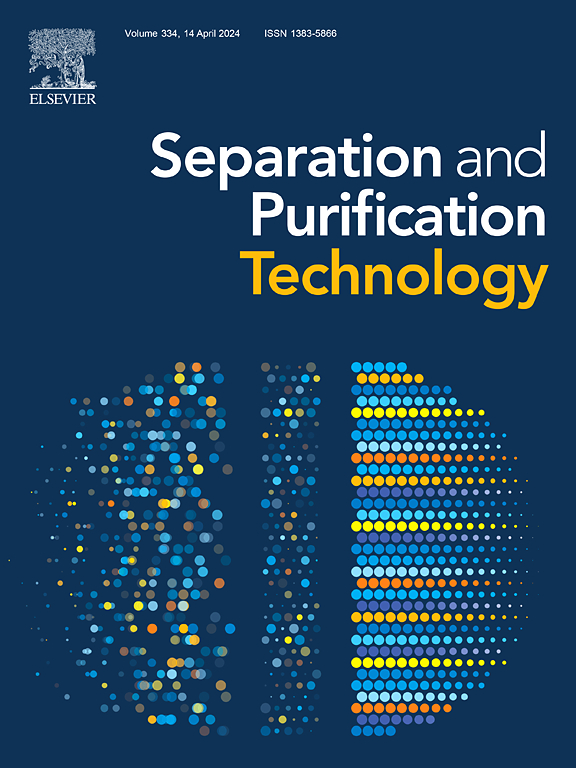基于多目标优化的萃取蒸馏工艺分离不同高浓度进料成分的可行性探索和性能评估
IF 8.1
1区 工程技术
Q1 ENGINEERING, CHEMICAL
引用次数: 0
摘要
本文章由计算机程序翻译,如有差异,请以英文原文为准。
Feasibility exploration and performance assessment of extractive distillation processes for separation of different high concentration feed compositions based on multi-objective optimization
The separation of azeotropic mixtures with high concentration composition has received increasing attention in recent years. This paper investigates the feasibility of different distillation processes to separate the ternary mixtures with a high concentration composition when the high-concentration composition is stable node or non-stable node. When the high concentration composition is stable node, the conventional three-column ED process (CTC), the four-column ED process with a preconcentration column (FCPC) and the three-column ED process with a combined distillation column (TCDC) can separate the mixtures. When the high concentration composition is non-stable node, only the CTC can separate the mixtures. Taking the NPA/THF/water system in which NPA and water are stable nodes, THF is non-stable node as an example, the results show that the TCDC process gets the best energy saving and cost reduction. Compared with the CTC processes of 0.8 water /0.1 NPA /0.1THF and 0.8 NPA /0.1 water /0.1THF systems, the TCDC processes reduce the energy consumption by 53.53 % /46.01%, the TAC by 57.49% /57.43%, the CO2 emissions by 60.12%/57.52% and the entropy generation 57.74%/45.31%.
求助全文
通过发布文献求助,成功后即可免费获取论文全文。
去求助
来源期刊

Separation and Purification Technology
工程技术-工程:化工
CiteScore
14.00
自引率
12.80%
发文量
2347
审稿时长
43 days
期刊介绍:
Separation and Purification Technology is a premier journal committed to sharing innovative methods for separation and purification in chemical and environmental engineering, encompassing both homogeneous solutions and heterogeneous mixtures. Our scope includes the separation and/or purification of liquids, vapors, and gases, as well as carbon capture and separation techniques. However, it's important to note that methods solely intended for analytical purposes are not within the scope of the journal. Additionally, disciplines such as soil science, polymer science, and metallurgy fall outside the purview of Separation and Purification Technology. Join us in advancing the field of separation and purification methods for sustainable solutions in chemical and environmental engineering.
 求助内容:
求助内容: 应助结果提醒方式:
应助结果提醒方式:


